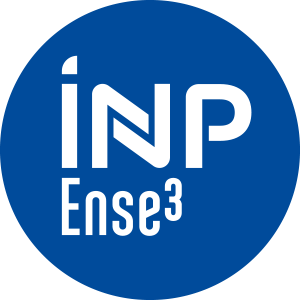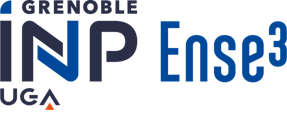Number of hours
- Lectures 10.0
- Projects -
- Tutorials 10.0
- Internship -
- Laboratory works 20.0
ECTS
ECTS 2.0
Goal(s)
Basics knowledges of components for power electronics
Bascis knowledges of switching for power electronics
Basics of classical families of power conversion
Modelling of steady-state of DC-DC converters
Modelling of dynamic behavior of DC-DC converters
Pierre LEFRANC
Content(s)
Electrical power converion is mainly done power electronics converters. In a first time, the objective is to understand the basics of the conversion based on the switching principle.
Components based on semiconductor devices (Si) are described and studies : diode, IGBT, MOSFET.
Passive components are also presented : capacitor, inductance, transformer. Physical description, modelling, technological issues and limitations.
DC-DC, AC-AC, DC-AC, AC-DC families are presented first and after the focus is done on the DC-DC family.
The dynamic modelling approach is given towards the average modelling principle : the general approach is then applied to simple examples.
PrerequisitesGeneral laws of electricity
Solid state physics (basics)
Control and dynamic aspects of systems
Continuous assessment (CC1) : reports of practical work
Final examination (ET1) : 2 hours fo writting exam
The course exists in the following branches:
- Curriculum - Master of Engineering GEE - Semester 7-8
Course ID : 4EUACEN6
Course language(s): 
You can find this course among all other courses.
JP.Ferrieux, F.Forest, "Alimentations à découpage, convertisseurs à résonance", Dunod, 3eme édition, 2006.
Robert W. Erickson and Dragan Maksimovic, "Fundamentals of Power Electronics", Springer, 2001, ISBN: 978-1-4757-0559-1 (Print) 978-0-306-48048-5 (Online).
Bacha, Seddik, Munteanu, Iulian, Bratcu, Antoneta Iuliana, "Power Electronic Converters Modeling and Control", Springer, 2014.



